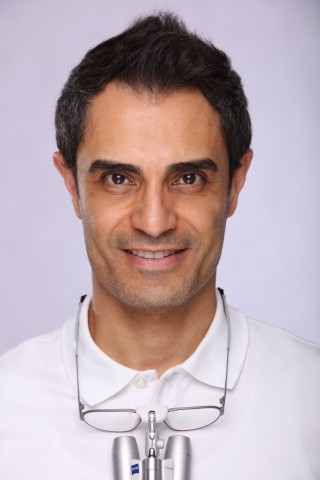Thank to technical advances in the fields of optical magnification (loupes, microscopes), microsurgical instruments, bone and soft tissue grafting materials and digital dentistry, dentists increasingly gain possibilies to center different specialities for a state-of-art treatment of tooth replacement under one roof in their clinics, even without involving the technical lab. New scientific reports demonstrate workflows using minimally invasive and microscopic techniques in every stage of treatment, starting with tooth extraction, socket preservation, implant insertion and soft tissue management up to the final chair-side digital full-anatomic supra-constrution with the goal to come a restitutio ad integrum as close as possible.
Implant microsurgery, microscopic and digital chair-side dentistry combined with knowledge, skills, passion and necessary time, is the success key in highly demanding cases. Recent literature show clearly that comparable conventional procedures reveal significant more complication and risks compared to mentioned microsurgical digital workflows, particularly in terms of surgical segment of treatment. Regarding design, fabrication and delivery of implant-prosthetic restorations with latest digital chair-side technologies and materials results are very well promising.

The primary aim of minimally invasive treatment methods is to minimize tissue trauma while maximizing tissue preservation or reconstruction, which means injuring only the amount of healthy anatomical tissue that is absolutely unavoidable. These kind of new treatment protocols are only achievable by utilization of modern dental microscopes and specially developed microscopic instruments, that are nowadays available for different fields of dentistry, like Endodontics, Periodontics, Prosthodontics, Restorative Dentistry and Implantology.

Dr. Behnam Shakibaie, an Oral Surgeon, was in 2010 the first author worldwide to scientifically describe clinical uses of dental microscope in the discipline of Implantology. Since then he has been developing and publishing multiple techniques and instruments in the new field of Microsurgical and Microscopic Implantology, such as Microscopic Open and Closed Sinus Lift, Microscopic Tooth Extraction along with Socket and Ridge Preservation and Microscopic Split Rolling Flap Technique for implant exposure.
Mentioned scientific achievements brought him different internationally recognized prizes such as "German Periodontology Award" and "American Micro Dentistry Congress Award".
Helpful links and resources:
https://onlinelibrary.wiley.com/authored-by/ContribAuthorRaw/Shakibaie/Behnam
https://www.quintessence-publishing.com/gbr/en/author/3815709/shakibaie-m-behnam
Email: pr@globalartco.it
Media Contact
Company Name: GAR Co.
Contact Person: Artemia Cattaneo
Email:Send Email
Country: Italy
Website: https://globalartco.it/

